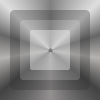http://photosounder.com/tutorials.php
I guess I should have started doing that a long time ago (since clearly most people aren't going to guess all those things by themselves, I myself realised we could do many things in Photosounder that I hadn't thought of before while researching/writing these tutorials) but I only had the idea to start doing that systematically like two days ago












